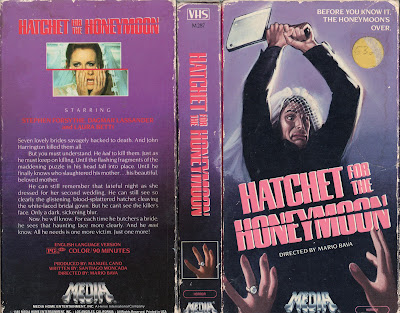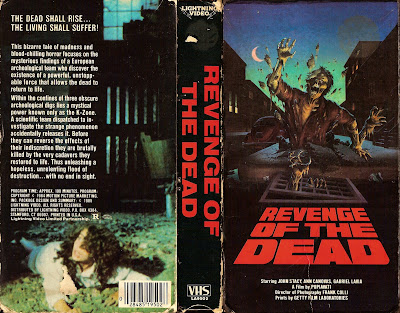 |
| Hero Initiative art by Cat Staggs (https://www.stormkingproductionsstore.com) |
In a recent interview, John Carpenter justified the track selections for his retrospective album Anthology. Perhaps the most surprising selection is the theme for his movie STARMAN—an odd choice because Jack Nitzsche, not Carpenter, composed it. The director explains that he wasn’t allowed (by the studio brass) to compose the theme, because STARMAN was a romantic comedy and he was a “horror guy.” Still, “It’s a theme to a movie that I’m very proud of. My only romantic comedy, so why not.”
STARMAN is generally well-regarded, but not as frequently
discussed as Carpenter’s other movies—probably because, in some ways, it
doesn’t feel like a “John Carpenter movie.” We think of Carpenter as an anti-romantic,
arguably cynical, storyteller—and STARMAN is a boldly romantic, humanist
film. As the director himself has
pointed out, it’s sort of the antithesis of THE THING (1982). Just look at how the opening sequence of
STARMAN contrasts with the earlier film; each one begins with an ominous UFO
landing, and progresses to a grotesque alien transformation. Everything after that is different.
Since THE THING was a critical and commercial disaster, doing
something different was no doubt appealing to Carpenter, but the director also
wanted to expand his range as a filmmaker—to break away from Naturalism, the “entrapment”
theme, and the claustrophobic settings of his earlier films, and produce a bigger,
brighter, more classical Hollywood movie.
It’s worth adding that Carpenter made STARMAN around the same time his
son Cody was born, in the spring 1984—which may also partly explain his desire
to tell a more optimistic story about the future of humanity.
By the time John Carpenter got involved, STARMAN had been in
development hell for several years.
According to multiple sources, the biggest problem was that the script
was deemed too similar to E.T. (1982).
Ironically, E.T. was the film that more or less sunk Carpenter’s THE
THING. Moviegoers in 1982 wanted
friendly aliens and happy endings, not bleak visions of the apocalypse.
Another irony: The directors who were attached to the
project before Carpenter purportedly wanted to make STARMAN an effects-driven
film, thereby marginalizing the love story.
Carpenter, the man behind the coldest effects-driven film of the 1980s,
wanted to make a love story. In
contemporary interviews, he cited the following films as inspirations: THE
WIZARD OF OZ (1939), IT HAPPENED ONE NIGHT (1934) and David Lean’s BRIEF
ENCOUNTER (1945). A fairy tale, a
screwball comedy, and a romantic drama.
This week I decided to watch STARMAN and IT HAPPENED ONE
NIGHT back to back, for the sake of comparison.
Both are “road movies,” and both are essentially romantic comedies… but not
exactly the same kind of romantic comedies. IT HAPPENED ONE NIGHT is, famously, the movie
that inaugurated the screwball comedy formula—which was successfully mined by
John Carpenter’s idol Howard Hawks (in TWENTIETH CENTURY, BRINGING UP BABY and
HIS GIRL FRIDAY). Screwball comedies were
a product of the Great Depression, and frequently explored socio-economic /
class conflicts. But what everyone
remembers about them is the way they depicted the battle of the sexes—with
women on top.
In IT HAPPENED ONE NIGHT, for example, Claudette Colbert is
rich / naive and Clark Gable is poor / cynical.
Despite—or because of—the inescapable tension between them, they spend
the movie fighting through their differences on an extended road trip. By the end of the film, they realize they
have fallen in love. In STARMAN, by
comparison, the male lead (Jeff Bridges) is alien / naïve and the female lead (Karen
Allen) is human / cynical, but it’s still the tension between those worldviews
that gives meaning to their journey. Does
that role reversal make STARMAN a screwball comedy, or a more traditional
romantic comedy?
The question led me to Wes D. Gehring’s book Romantic Vs. Screwball Comedy: Charting the
Difference, which proposes that there are five key differences between
screwball comedies and romantic comedies.
The first key difference is that screwball comedies put the emphasis on
“funny,” “accentuating broad physical comedy and ludicrous events,” while
traditional romantic comedies put the emphasis on “love,” and “is more reality
based, with little or no slapstick.” For
most of its running time, STARMAN leans toward screwball comedy—with Bridges
doing a great “fish out of water”/ “stranger in a strange land” routine that
offers plenty of opportunities for physical comedy.
On the other hand, STARMAN seems to invert the male / female dynamic of most screwball comedies. Gehring writes, “More often than not, the screwball comedy male must suffer through a ritualistic humiliation at the hands of the zany heroine and/or the plot itself.” IT HAPPENED ONE NIGHT illustrates this point, but there are even better examples; THE AWFUL TRUTH (1937), BRINGING UP BABY (1938), and THE LADY EVE (1941) come to mind. In STARMAN, it’s the female character who suffers at the hands of the zany male hero.
Which brings us to Gehring’s third key difference between
screwball comedies and romantic comedies.
The former, he writes, are stocked with flakey eccentrics, while the
latter feature more serious, down-to-earth characters. As an example, Gehring contrasts screwball
heroine Carole Lombard in MY MAN GODFREY (1936) with romantic comedy heroine Audrey
Hepburn in SABRINA (1954). Karen Allen’s
character in STARMAN is certainly closer to Hepburn; both women are suicidally
depressed at the beginning of the film.
Unlike Humphrey Bogart in SABRINA, however, STARMAN’s male love interest
is a screwball hero. I wonder if
Carpenter was aware of mashing up genres in this way.
The fourth key difference between the two genres, according
to Gehring, is the “dating ritual.”
Screwball comedies create conflict through mostly-humorous love
triangles, while romantic comedies put more emphasis on character differences
(or, in the case of BRIEF ENCOUNTER, the divisiveness of real-world
responsibilities). As STARMAN unfolds,
the comedy recedes, the love story grows, and the divide between the lovers is
much bigger than character differences. Jeff Bridges and Karen Allen belong to
entirely different species, and the impact of their romance—and of their
journey together—is not just personal, but universal. At this point, STARMAN embraces its sci-fi /
fantasy influences over comedic influences, and becomes a romantic fairy tale.
Gehring’s final difference between screwball comedies and
romantic comedies is related to plot pacing; he says screwball comedies
“escalate near the close,” while romantic comedies adopt “a turtle’s pace” in
the home stretch. STARMAN escalates, but
not in the way that a screwball comedy rides off the rails into unrestrained nuttiness. In its final act, Carpenter’s film is more
like a dramatic thriller—something along the lines of Alfred Hitchcock’s THE
THIRTY-NINE STEPS, a different kind of road movie with a built-in ticking
clock. Will they or won’t they get to Barringer
Crater in Arizona before Bridges becomes permanently stranded on a hostile
planet? The resolution is reminiscent of
E.T., but Carpenter keeps it short and sweet, avoiding mawkishness.
 |
| A few years ago, I went on my own STARMAN road trip.... |
 |
| ... ending at Barrington Crater near Winslow, Arizona |
The director is understandably proud of this tonal anomaly
in his career—a fleeting glimpse of his romantic, sentimental side. In a 1985 interview, he recognized in himself
and in the culture at large a profound need for something magical to counteract
the grim reality of post-Vietnam / post-Watergate America. He told L.A.
Weekly’s Michael Dare, “The Karen Allen character is like we all are. She’s lost her husband; he’s dead; she’s
sitting drinking wine and going over the old days again, and she doesn’t have
any hope left. She gains the hope by a
new feeling from this man. She falls in
love with him. She allows herself to be
vulnerable and humble again…. This is something we all want: to say ‘Listen, it
doesn’t matter how many nuclear warheads there are or how we’re treating the
Russians. It’s all going to work
out.’ It’s a nice fantasy.”
But maybe that’s all it was for the filmmaker? When I interviewed Carpenter in 2008 for my
documentary Nightmares in Red, White and
Blue, he responded to a question about the post-9/11 “culture of fear” by
saying that he didn’t really believe in STARMAN’s conclusion that humanity is
at its best when things are at their worst.
“That’s not true,” he said. “I wish it was true.” (That’s the romantic in him—the wishing.) What the aftermath of 9/11 showed, he said,
is that when people are afraid, humanity gets real ugly. I think it’s safe to say that he’s not
feeling any more optimistic these days.
The anti-romantic sentiment seems to inform Carpenter’s more
famous films, those made before and after STARMAN… but I cling to something
else he said in that 1985 interview with Michael Dare, about the ability to be
both a pessimist and an optimist at the same time. He explained, “I’m very pessimistic about the
long term: we’re all alone and we die alone... But I’m a short-term
optimist. I gained this by making movies
in which it’s all going to work out.” A
film like STARMAN, he concluded, “touches a little thing inside of us. It was easy for me to tap into that, real
easy. It’s a departure, because people
haven’t seen something like this from me before. But now they have.”
All these years later, STARMAN remains a very bright light
in the middle of the filmmaker’s dark galaxy.

























































